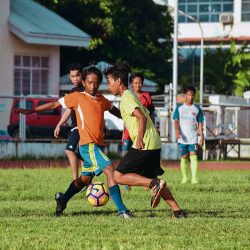Attention Deficit Hyperactivity Disorder (ADHD) is a common condition that affects children worldwide. Children with ADHD may struggle with hyperactivity, impulsivity, and inattention, which can cause challenges in various aspects of their lives, including their academic performance, social interactions, and emotional well-being. While there are various treatments and therapies available…Read More

Discipline Mistakes Parents Make
Although almost every parent wants great kids, many parents aren’t sure how to get there. Here are three of the most common child discipline mistakes and how to avoid them. 1. Treating children like pets, not people Starting in the womb, the entire journey of having children is often viewed…Read More

Tips for Talking to Your Kids about Bullying
Today’s parents don’t have to look very far to find examples of bullying. It seems as if stories of bullying can be read about in the newspaper or seen on TV almost every day. However, the subject of bullying can be challenging to approach with children. Whether a child is…Read More

Bullying and special needs children
Children with physical, developmental, intellectual, emotional and sensory disabilities are at an increased risk of experiencing bullying at school and in other public places where they spend time, such as playgrounds and parks. A child with disabilities may not have the verbal skills to speak up for himself or herself…Read More

Addressing Bullying In Youth Sports
Bullying has been brought to national attention due to several high-profile tragedies. Bullying in youth sports has been part of the game for decades. Fortunately, it doesn’t have to be so. There are many ways that coaches, parents, referees, volunteers, spectators and kids can work together to keep bullying out…Read More

Understanding the different types of bullies
Just like the many different types of bullying, there are different types of bullies. Each has their own reasons for bullying and the approach that they take to belittle, intimidate or harass their targets. Today we’re going to look at who these bullies are and how they act out. …Read More

Is Bullying a Public Health Issue?
The issue of bullying in schools has garnered national attention, but less attention has been paid to the physical toll that bullying can take on both the victim and the child who is bullying another person. However, as more reports of illness start to appear in areas where bullying is…Read More

Debunking the popularity myth
Awareness of bullying has dramatically increased in America over the last few years. There are many stories in the news about the disastrous consequences that sometimes take place. However, many people who are not around the bullying on a regular basis fail to see the reason that it may be…Read More

Do your kids know about stranger danger?
Children can be very trusting of others, an issue that can lead to serious problems if a stranger’s intent is malicious. While many strangers are nice, a child needs to learn to recognize a situation to avoid stranger danger from those who aren’t trustworthy. A parent can help a youngster…Read More

One city’s fight to criminalize bullying
Carson City California is working to pass an ordinance making the act of picking on others a crime. This is just the latest in a trend over the last few years to pass legislation aimed at putting a stop to bullying, including a similar ordinance that was passed in a…Read More
